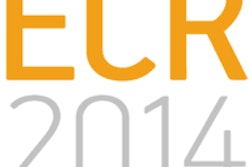
Healthcare costs were higher in patients screened annually with low-dose CT for lung cancer, but costs rose only by the amount associated with the screening program, according to a new study published in Lung Cancer.
The study examined 4,104 CT screening participants 50 to 70 years old who were randomized to five annual CT screenings between 2005 and 2010, calculating costs for primary and secondary care from health registries.
Median annual healthcare costs per participant were significantly higher in the screening group versus the control group, but when costs of the screening program were excluded, the difference was no longer statistically significant.
"Therefore, the excess costs in the screening group were attributable to the costs of the screening program itself and not by a greater healthcare use," wrote Dr. Jakob Rasmussen and colleagues from the University of Copenhagen (Lung Cancer, 30 December 2013).
Healthcare costs were compared in September 2011 between the CT screening group and the control group, and between the control group and the true-positive, false-positive, and true-negative groups.
The median annual cost in the CT screening group was 1,342 euros compared with 1,190 euros for the control group (p < 0.001). When the costs associated with the CT screening program were excluded, there was no longer a difference between the CT screening group at 1,155 euros and the control group (p = 0.52).
Annual costs were 10.57 times higher for the true-positive group and 1.67 times higher for the false-positive group compared with the control group.
"The higher healthcare costs for the true-positive and the false-positive groups, presented as the cumulative effect, were found in both the secondary and primary [healthcare] sector," the study team wrote. "Those diagnosed with lung cancer and those receiving an abnormal CT scan later confirmed to be false-positive may have had greater needs and concerns; accordingly, they consulted their general practitioners and other primary healthcare professionals more.
On the other hand, the true-negative group may have been reassured of their health due to the screening, and felt they had no need for additional healthcare compared with the control group, consistent with experience in mammography.
As a result, "the higher healthcare costs in the true-positive and false-positive groups are outweighed by the tendency of lower costs in the larger true-negative group, and no differences in total costs between the screening group and the control group are found when costs of the CT program are excluded," Rasmussen and colleagues wrote.


















